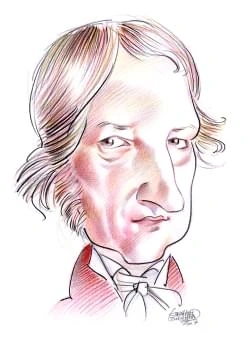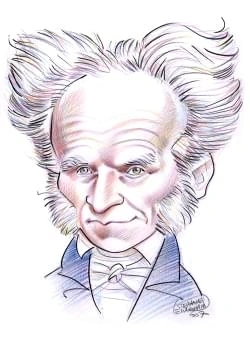438 résultats pour "east"
-
Men's Swimming: Olympic Gold Medalists.
1896 Alfréd Hajós Hungary 1:22.20 1904 1 Zoltán Halmay Hungary 1:02.80 1906 Charles Daniels United States 1:13.40 1908 Charles Daniels United States 1:05.60 1912 Duke Kahanamoku United States 1:03.40 1920 Duke Kahanamoku United States 1:00.40 1924 Johnny Weissmuller United States 59.00 1928 Johnny Weissmuller United States 58.60 1932 Yasuji Miyazaki Japan 58.20 1936 Ferenc Csík Hungary 57.60 1948 Walter Ris United States 57.30 1952 Clarke Scholes United States 57.40 1956 Jon Henricks Austria 55...
-
Canadian Pacific Railway - Canadian History.
roads constructed inland from the lakeshore. However, this changed with the outbreak in Saskatchewan of the Northwest Rebellion by Louis Riel and his supportersagainst the authority of the Canadian government in March 1885. Despite the fact that the railway was not completed, a contingent of troops was able to reachWinnipeg from Montréal in only seven days, much faster than they could have gone overland, and get from there to Saskatchewan in time to successfully put down therebellion. This actio...
-
Cold War.
With this, all the countries of Eastern Europe were under Communist control, and the creation of the Soviet bloc was complete. The events of 1948 contributed to agrowing conviction among political leaders in both the United States and the USSR that the opposing power posed a broad and fundamental threat to their nation’sinterests. The Berlin blockade and the spread of Communism in Europe led to negotiations between Western Europe, Canada, and the United States that resulted in the NorthAtlantic...
-
Cold War .
With this, all the countries of Eastern Europe were under Communist control, and the creation of the Soviet bloc was complete. The events of 1948 contributed to agrowing conviction among political leaders in both the United States and the USSR that the opposing power posed a broad and fundamental threat to their nation’sinterests. The Berlin blockade and the spread of Communism in Europe led to negotiations between Western Europe, Canada, and the United States that resulted in the NorthAtlantic...
-
Cold War - U.
With this, all the countries of Eastern Europe were under Communist control, and the creation of the Soviet bloc was complete. The events of 1948 contributed to agrowing conviction among political leaders in both the United States and the USSR that the opposing power posed a broad and fundamental threat to their nation’sinterests. The Berlin blockade and the spread of Communism in Europe led to negotiations between Western Europe, Canada, and the United States that resulted in the NorthAtlantic...
-
Fondée au XVIIe siècle sur la côte atlantique, symbole de
Enfin, les habitants en provenance de l'Amérique latine représentent 11 % de la population de l'agglomération et le nombre des Chinois est en augmentation sensible. Complétez votre recherche en consultant : Les corrélats Bartholdi Frédéric Auguste Hudson Hudson Henry Indépendance américaine (guerre de l') Iroquois Verrazano (Giovanni da) Les livres New York - la Liberté éclairant le monde, page 3422, volume 6 New York - l'Empire State Building, page 3423, volume 6 La configuration...
-
Seattle - geography.
Queen Anne Hill, north of downtown, was long isolated by its steep ascent but emerged as a fashionable residential area at the close of the 19th century. North of QueenAnne Hill and across the Lake Washington Ship Canal, Ballard was originally settled by Scandinavian immigrants. Annexed to Seattle in 1907, Ballard today is a residentialneighborhood with a strong Nordic heritage. To the east from Ballard along the north side of the Ship Canal, the neighborhoods of Fremont, Wallingford, and the Un...
-
Ottoman Empire - history.
Süleyman ISüleyman I, the sultan of the Ottoman Empire during its zenith, became known in the western world as Süleyman the Magnificent. Hewas known among his own people as the Lawgiver because he revised the legal system of the empire. Süleyman had several sons,two of whom he executed after quarreling with them.Culver Pictures Bayazid died in captivity, a suicide according to some accounts, and a struggle for succession to the sultanate broke out among his sons. Muhammad I (reigned 1413-1421)ev...
-
-
Africa - history.
Africa’s other major mountainous regions occur at the northern and southern fringes of the continent. The Atlas Mountains, a system of high ranges, extend for 2,200 km(1,400 mi) across Morocco, Algeria, and Tunisia, roughly parallel to the northern coast. These ranges enclose a number of broad inland basins and plateaus. In the west, theHigh (or Grand) Atlas contains Toubkal (4,165 m/ 13,665 ft), the highest peak of the system. Toward the east, the Atlas consists of two parallel ranges: the Tell...
-
Jerusalem - geography.
There are many other artifacts in the city, tied to various periods of history; those of Canaanite, Israelite, Greek, Roman, Arab, Crusader, and Ottoman origin areamong the more prominent. Modern attractions include the Israel Museum (completed in 1965), which houses the Shrine of the Book, where the Dead Sea Scrolls areexhibited; the Rockefeller Museum (opened in 1938), which contains archaeological finds; the Yad Vashem Holocaust Museum; the Museum of Biblical Archaeology; theMuseum of Islamic...
-
Tennessee (state) - geography.
The climate of Tennessee is characterized by hot summers, mild winters, and abundant rainfall. C1 Temperature Average July temperatures range from less than 21° C (70° F) in the Blue Ridge region to 27° C (80° F) at Nashville and Memphis. Maximum daytime temperatures insummer often rise above 35° C (95° F) in central and western Tennessee. Daytime temperatures in the mountains rarely rise above 32° C (90° F). Summer nights tendto be warm and muggy in central and western Tennessee, but temperatu...
-
Tennessee (state) - USA History.
The climate of Tennessee is characterized by hot summers, mild winters, and abundant rainfall. C1 Temperature Average July temperatures range from less than 21° C (70° F) in the Blue Ridge region to 27° C (80° F) at Nashville and Memphis. Maximum daytime temperatures insummer often rise above 35° C (95° F) in central and western Tennessee. Daytime temperatures in the mountains rarely rise above 32° C (90° F). Summer nights tendto be warm and muggy in central and western Tennessee, but temperatu...
-
Lebanon (country) - country.
during the civil war. Within the country, thousands of Shia Muslim refugees fled fighting in southern Lebanon in the 1990s and moved into shantytowns in Beirut’ssouthern suburbs. Lebanon’s major cities were greatly affected by the civil war. Beirut has gradually regained most of its prewar population and remains the country’s largest city. Tripoli,the northern port, is the second largest city. Jūniyah, north of Beirut, was developed as a wartime port and subsequently had a population boom. Za ḩl...
-
Paris (city, France) - geography.
Théâtre Musical de Paris and the Théâtre de la Ville. Just north of the Hôtel de Ville is the Pompidou Center, also known as Beaubourg, an arts complex devoted to modern and contemporary art and design. The structure,in steel and glass and featuring brightly colored, exposed pipes and ducts, is the work of Italian architect Renzo Piano and British architect Richard Rogers. Itscontroversial pop-art design contrasts sharply with the overall gray hue of the city, and was criticized by many followin...
-
Montana - geography.
(191 sq mi), is Montana’s largest lake, and the largest natural freshwater lake in the contiguous states west of the Mississippi River. C Climate Climatic regions in Montana coincide roughly with the two major physiographic regions. In western Montana, as compared with the eastern plains area, winters tend tobe milder while summers are cooler. Precipitation is more evenly distributed throughout the year in the west, and it is cloudier and somewhat more humid in all seasons.In addition, the grow...
-
Montana - USA History.
(191 sq mi), is Montana’s largest lake, and the largest natural freshwater lake in the contiguous states west of the Mississippi River. C Climate Climatic regions in Montana coincide roughly with the two major physiographic regions. In western Montana, as compared with the eastern plains area, winters tend tobe milder while summers are cooler. Precipitation is more evenly distributed throughout the year in the west, and it is cloudier and somewhat more humid in all seasons.In addition, the grow...
-
-
Pittsburgh - geography.
College of Allegheny County (1966), with branches in the city and suburbs. Pittsburgh has many outstanding cultural institutions. The Oakland district is where Carnegie Mellon University and the University of Pittsburgh are located. The CarnegieMuseums of Pittsburgh include The Carnegie Museum of Art (including the Scaife Galleries), which holds a distinguished motion-picture and video collection and a uniquestudy of architecture; the Carnegie Museum of Natural History, which displays an extensi...
-
Oklahoma - geography.
portion and the Panhandle are classified as a steppe, where precipitation, typically 250 to 500 mm (10 to 20 in), is the controlling characteristic. January is usually the coldest month with an average of about 3°C (38°F) and extremes from -33°C (-27°F), the lowest ever recorded, to 33°C (92°F). Summer arelong and hot with temperatures in the upper 30°s C (lower 100°s F) common from May until September across the state. The growing season varies from less than 180days in the western Panhandle to...
-
Oklahoma - USA History.
portion and the Panhandle are classified as a steppe, where precipitation, typically 250 to 500 mm (10 to 20 in), is the controlling characteristic. January is usually the coldest month with an average of about 3°C (38°F) and extremes from -33°C (-27°F), the lowest ever recorded, to 33°C (92°F). Summer arelong and hot with temperatures in the upper 30°s C (lower 100°s F) common from May until September across the state. The growing season varies from less than 180days in the western Panhandle to...
-
Washington (state) - geography.
The crest of the Cascade Range divides Washington into two distinct climatic regions. The area west of the Cascades, which is exposed throughout the year to rain-bearing winds from the Pacific Ocean, has a temperate marine type of climate that is characterized by mild wet winters and cool summers. The Cascades prevent themoist air blowing in from the Pacific from reaching eastern Washington. The Rocky Mountains on the eastern border also represent a climatic barrier. As a result, thesevere winte...
-
Washington (state) - USA History.
The crest of the Cascade Range divides Washington into two distinct climatic regions. The area west of the Cascades, which is exposed throughout the year to rain-bearing winds from the Pacific Ocean, has a temperate marine type of climate that is characterized by mild wet winters and cool summers. The Cascades prevent themoist air blowing in from the Pacific from reaching eastern Washington. The Rocky Mountains on the eastern border also represent a climatic barrier. As a result, thesevere winte...
-
New York (city) - geography.
The Bronx is the fourth largest and the northernmost of the five boroughs, and the only one on the American mainland. Even so, it is surrounded by water on threesides: Long Island Sound on the east, the Harlem and East rivers on the south, and Hudson River on the west. Encompassing 109 sq km (42 sq mi), it had 1,332,650inhabitants in 2000. Largely residential, the Bronx includes dozens of vibrant neighborhoods. Fieldston is particularly elegant, with great stone houses set among spacious lawns a...
-
Oregon - geography.
B Rivers and Lakes The Columbia River forms most of the Oregon-Washington boundary, and with its tributaries this great river drains a large portion of Oregon. From the point where theColumbia first touches the state, at Wallula Gap, the river runs in a shallow gorge, deepening as it approaches the Cascades. This part of the river once had manyrapids and falls, but is now navigable by large vessels because of dams and locks that have been built along much of its length. An important tributary o...
-
Oregon - USA History.
B Rivers and Lakes The Columbia River forms most of the Oregon-Washington boundary, and with its tributaries this great river drains a large portion of Oregon. From the point where theColumbia first touches the state, at Wallula Gap, the river runs in a shallow gorge, deepening as it approaches the Cascades. This part of the river once had manyrapids and falls, but is now navigable by large vessels because of dams and locks that have been built along much of its length. An important tributary o...
-
-
Louisiana - geography.
lakes are on the Red River and its tributaries. In addition, small oxbow lakes are numerous in the Mississippi Alluvial Plain. Oxbow lakes are formed when a river cutsthrough the neck of one of its loops, or meanders, thus establishing a shorter course and leaving the former loop as a lake separate from the river. Louisiana also hassome artificially created reservoirs. C Coastline Louisiana’s long and irregular coastline extends along the Gulf of Mexico from the Pearl River on the east to the S...
-
Louisiana - USA History.
lakes are on the Red River and its tributaries. In addition, small oxbow lakes are numerous in the Mississippi Alluvial Plain. Oxbow lakes are formed when a river cutsthrough the neck of one of its loops, or meanders, thus establishing a shorter course and leaving the former loop as a lake separate from the river. Louisiana also hassome artificially created reservoirs. C Coastline Louisiana’s long and irregular coastline extends along the Gulf of Mexico from the Pearl River on the east to the S...
-
Kansas - geography.
at the adjoining cities of Kansas City, Kansas, and Kansas City, Missouri. Its chief headstreams are the Republican and Smoky Hill rivers, which join to form the KansasRiver at Junction City. Each of the headstreams has numerous tributaries. The Kansas River proper is only 270 km (170 mi) long, but the Smoky Hill River has a lengthof 870 km (540 mi), and the Republican River has a length of 720 km (450 mi). The main tributary flowing into the Kansas River is the Big Blue River. The Arkansas Rive...
-
Kansas - USA History.
at the adjoining cities of Kansas City, Kansas, and Kansas City, Missouri. Its chief headstreams are the Republican and Smoky Hill rivers, which join to form the KansasRiver at Junction City. Each of the headstreams has numerous tributaries. The Kansas River proper is only 270 km (170 mi) long, but the Smoky Hill River has a lengthof 870 km (540 mi), and the Republican River has a length of 720 km (450 mi). The main tributary flowing into the Kansas River is the Big Blue River. The Arkansas Rive...
-
Canadian Forces.
As the Land Force Command component of the CF, the Canadian army is responsible for land combat and for physically protecting people and land-based resources. Itis the component of the CF most often called on to support international military operations and peacekeeping missions and to maintain order in times of civil unrest. A Organization The 20,900 personnel who comprise the army’s regular force are organized into four geographically based areas. Land Force Atlantic includes the provinces of...
-
Texas - geography.
D Climate Eastern Texas has a humid subtropical climate, while a semiarid low latitude climate prevails in central areas, and an arid low latitude climate in the extreme west. Alongthe coast the climate is much milder, with fewer extremes in temperatures. Hurricanes sometimes hit the coastal areas of Texas from late July through September, andtornadoes are common in north-central Texas in April and May. D1 Temperature Summers are hot throughout the state, and temperatures exceeding 35°C (95°F)...
-
Texas - USA History.
D Climate Eastern Texas has a humid subtropical climate, while a semiarid low latitude climate prevails in central areas, and an arid low latitude climate in the extreme west. Alongthe coast the climate is much milder, with fewer extremes in temperatures. Hurricanes sometimes hit the coastal areas of Texas from late July through September, andtornadoes are common in north-central Texas in April and May. D1 Temperature Summers are hot throughout the state, and temperatures exceeding 35°C (95°F)...
-
India - country.
delta in the north, are intensely farmed. B Rivers and Lakes The rivers of India can be divided into three groups: the great Himalayan rivers of the north, the westward-flowing rivers of central India, and the eastward-flowingrivers of the Deccan Plateau and the rest of peninsular India. Only small portions of India’s rivers are navigable because of silting and the wide seasonal variation inwater flow (due to the monsoon climate). Water transport is thus of little importance in India. Barrages,...
-
-
Alberta - Geography.
C Climate Except for the mountain areas, summers throughout the province are quite warm. Winters are long and extremely cold. In July, average daily temperatures range fromabout 16°C (about 60°F) along the northern boundary to about 21°C (about 70°F) in the south. In the extreme southeastern section of the province, temperatures of43°C (110°F) have been recorded. In January, average daily temperatures range from about -14°C (about 6°F) at Grande Prairie to about -9°C (about 16°F) atCalgary. Tem...
-
Alberta - Canadian History.
C Climate Except for the mountain areas, summers throughout the province are quite warm. Winters are long and extremely cold. In July, average daily temperatures range fromabout 16°C (about 60°F) along the northern boundary to about 21°C (about 70°F) in the south. In the extreme southeastern section of the province, temperatures of43°C (110°F) have been recorded. In January, average daily temperatures range from about -14°C (about 6°F) at Grande Prairie to about -9°C (about 16°F) atCalgary. Tem...
-
Denmark - country.
forests, which cover just 11.6 percent of the country, include conifers (mainly fir, spruce, larch, and pine), beech, oak, birch, and ash. Several varieties of ferns andmosses common to the northern European mainland are also found. Wild animals are scarce. Natural animal life is limited to deer and small animals such as foxes,squirrels, hares, wild ducks, pheasants, and partridges. Numerous species of freshwater fish live in Denmark’s streams and lakes. F Environmental Issues Considered highly...
-
Ship.
I
INTRODUCTION
Ship, vessel that is buoyant in the water and used
B1 Biremes Experience soon proved that longer ships posed a new set of problems: They were weaker structurally, more difficult to maneuver, and presented a larger target to anyenemy ship with a ram. In the 8th century BC Mediterranean shipbuilders eliminated these problems with the bireme , a war galley built to accommodate two levels, or banks , of oarsmen. Oarsmen on the lower level rowed oars from ports cut into the side of the vessel, while those above rowed from the deck. This arrangemen...
-
Thailand - country.
E Natural Resources Thailand possesses a range of mineral resources. Tin is mined in the peninsula. Important gemstones, such as sapphires, are found in the southeast, and coal reserves,particularly lignite, are in the north. Fish are abundant in rivers and coastal waters. In addition to being consumed domestically, fish are also exported. F Climate Thailand experiences a typical monsoon climate. Winds blow from the northeast during the winter months of October to March or April (known as the...
-
Québec - Geography.
facilities. Tributaries south of the St. Lawrence include the Richelieu, the Saint-François, and the Chaudière rivers, which are only a few hundred kilometers long. TheRimouski and Matane rivers, also south of the St. Lawrence, are popular areas for recreation and salmon fishing. In the Canadian Shield, the longest rivers are theRupert, Eastmain, Grande Baleine, and La Grand-Rivière, which is the site of a huge hydroelectric complex. C Coastlines Québec has two systems of saltwater coastline. O...
-
Québec - Canadian History.
facilities. Tributaries south of the St. Lawrence include the Richelieu, the Saint-François, and the Chaudière rivers, which are only a few hundred kilometers long. TheRimouski and Matane rivers, also south of the St. Lawrence, are popular areas for recreation and salmon fishing. In the Canadian Shield, the longest rivers are theRupert, Eastmain, Grande Baleine, and La Grand-Rivière, which is the site of a huge hydroelectric complex. C Coastlines Québec has two systems of saltwater coastline. O...
-
Afghanistan - country.
D Climate Most of Afghanistan has a subarctic mountain climate with dry and cold winters, except for the lowlands, which have arid and semiarid climates. In the mountains and afew of the valleys bordering Pakistan, a fringe effect of the Indian monsoon, coming usually from the southeast, brings moist maritime tropical air in summer.Afghanistan has clearly defined seasons: Summers are hot and winters can be bitterly cold. Summer temperatures as high as 49°C (120°F) have been recorded in thenorth...
-
-
Vermont - geography.
Forests cover 78 percent of Vermont. Most of the trees are deciduous, principally the maple, elm, birch, beech, oak, hickory, ash, cherry, and butternut. The state treeis the sugar maple, which provides Vermont’s famous maple syrup. Conifers are common in some mountain areas and include mainly the white pine, red spruce,hemlock, and cedar. A great variety of ferns have been found within the state. Among the more common wildflowers that grow in Vermont are anemones, arbutuses,violets, lilacs, dai...
-
Vermont - USA History.
Forests cover 78 percent of Vermont. Most of the trees are deciduous, principally the maple, elm, birch, beech, oak, hickory, ash, cherry, and butternut. The state treeis the sugar maple, which provides Vermont’s famous maple syrup. Conifers are common in some mountain areas and include mainly the white pine, red spruce,hemlock, and cedar. A great variety of ferns have been found within the state. Among the more common wildflowers that grow in Vermont are anemones, arbutuses,violets, lilacs, dai...
-
Middle Ages .
Saints were very important in Late Antiquity. They were considered both models of virtue and powerful miracle workers. One of the most well-known saints of the periodwas Saint Anthony. Anthony gave away all his possessions and left his hometown in Egypt to live alone in the desert and pray. Anthony was one of the first Christianmonks. The word monk comes from a term meaning 'alone.' Gradually Anthony attracted followers, and he eventually became the center of a whole community of monks who wis...
-
Turkey - country.
has a general elevation of 900 to 1,500 m (3,000 to 5,000 ft) above sea level. The eastern highlands region is the most mountainous and rugged portion of Turkey; Mount Ararat (Ağrı Da ğı) is the highest peak in the country at 5,165 m (16,945ft). Many Christians and Jews believe it to be the same Mount Ararat mentioned in the Bible as the place where Noah’s ark came to rest. The eastern highlands are thesource for both the Tigris (Dicle) and Euphrates (Fir āt)—two of southwestern Asia’s principal...
-
Colombia - country.
In Bogotá the average high temperature in January is 20°C (68°F), and in July the average high is 19°C (65°F). The highs for the same months in Barranquilla are 32°C(89°F) and 33°C (91°F). Throughout the year, three-month periods of rain and dry weather alternate. Along the Pacific coast precipitation is heavy. At Bogotá the annual rainfall averages about1,060 mm (about 42 in), and in Barranquilla it averages about 800 mm (about 32 in). Dry weather prevails on the slopes of the Cordillera Orient...
-
Nebraska - geography.
by natural resource districts to limit the rate of pumping for irrigation. C Climate Nebraska has a typical continental climate with wide seasonal variations in temperature. C1 Temperature Winter temperatures below -20°C (0° F) and summer temperatures in the upper 30°s C (lower 100°s F) are common. The average January temperature varies from about -7° C (about 20° F) in the northeast to about -2° C (about 29° F) in the southwest. The average for July, thehottest month, ranges from about 26° C...
-
Nebraska - USA History.
by natural resource districts to limit the rate of pumping for irrigation. C Climate Nebraska has a typical continental climate with wide seasonal variations in temperature. C1 Temperature Winter temperatures below -20°C (0° F) and summer temperatures in the upper 30°s C (lower 100°s F) are common. The average January temperature varies from about -7° C (about 20° F) in the northeast to about -2° C (about 29° F) in the southwest. The average for July, thehottest month, ranges from about 26° C...
-
Missouri - geography.
Saint Francois Mountains, at the eastern end of the crest of the dome. Only in these mountains have the sedimentary rocks been sufficiently eroded away so that theunderlying igneous rocks are exposed. They form the rounded, knoblike peaks of an old mountain range. The peaks project, in isolation or in clusters, between 230 and300 m (750 and 1,000 ft) above the surrounding sedimentary basins. One of these knobs, Taum Sauk Mountain, reaches 540 m (1,772 ft) above sea level and is thehighest point...
-
-
Missouri - USA History.
Saint Francois Mountains, at the eastern end of the crest of the dome. Only in these mountains have the sedimentary rocks been sufficiently eroded away so that theunderlying igneous rocks are exposed. They form the rounded, knoblike peaks of an old mountain range. The peaks project, in isolation or in clusters, between 230 and300 m (750 and 1,000 ft) above the surrounding sedimentary basins. One of these knobs, Taum Sauk Mountain, reaches 540 m (1,772 ft) above sea level and is thehighest point...
-
Hawaii (state) - geography.
limestone along the coast. The volcanoes of the Hawaiian Islands are all so-called shield volcanoes, or lava domes. Unlike the volcanoes of Alaska and South America, those of Hawaii were notcreated by very explosive eruptions. Formed mostly by lava flows, they are great rounded mountain masses, rather than steep-sided cones. Mauna Kea, dormant forcenturies, is the highest mountain in the state. It rises to 4,205 m (13,796 ft) above sea level, and its summit is dotted with cinder cones formed by...
}})








